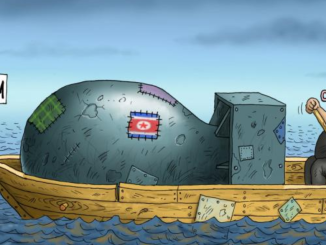
Chinese researchers have allegedly developed a new kind of non-nuclear explosive weapon based on hydrogen fuel. While not nuclear, the new 2kg (4.4 lbs) bomb is designed to cause massive heat and fire damage over a long duration and is far more potent than traditional TNT-based bombs.
According to the team behind it, the secret sauce is magnesium hydride, a powder that stores hydrogen in a solid form. The weapon is detonated using a standard starter explosive that breaks the solid main payload apart into tiny particles, releasing the stored hydrogen gas.
{snip}
This produces a “white-hot” fireball that is so hot it can allegedly melt metal over a large area. In this sense, it can be thought of as more akin to napalm or a thermobaric weapon than a nuclear weapon.
Non-nuclear and burns like hell
According to Chinese sources, the bomb was developed by the China State Shipbuilding Corporation’s (CSSC) 705 Research Institute, which is a key player in underwater weapon systems.
{snip}
“This combination allows precise control over blast intensity, easily achieving uniform destruction of targets across vast areas,” he added.
According to the team, the blast itself is not as powerful as more conventional explosives in terms of blast pressure, yielding around 40% of the equivalent TNT. But it can release far more heat and lasts much longer.
{snip}
Another interesting side effect of the explosive is that it doesn’t just explode; it also acts like a kind of thermal chain reaction that lasts as long as it has fuel to sustain it.
Hydrogen just got hotter
This, the team believes, would make it ideal for tasks like area denial, making impacted areas too hot to occupy for a time. It is also adept at incinerating targets, such as vehicles and other equipment.
{snip}
Producing magnesium hydride was once a challenging and hazardous process, typically conducted in small laboratory batches. However, China has recently built a factory capable of producing 150 tonnes per year, utilizing a safer and cheaper method.
This weapon has some other potential benefits beyond its destructive capabilities. Since it is not nuclear-based, for example, it can be developed without breaching nuclear treaties.
If fully developed and deployed, it would also introduce a new class of thermal weapons that can fry electronics, melt armor, or torch an area for denial purposes.
* Original Article:
https://interestingengineering.com/military/china-non-nuclear-hydrogen-bomb-tested?group=test_a
